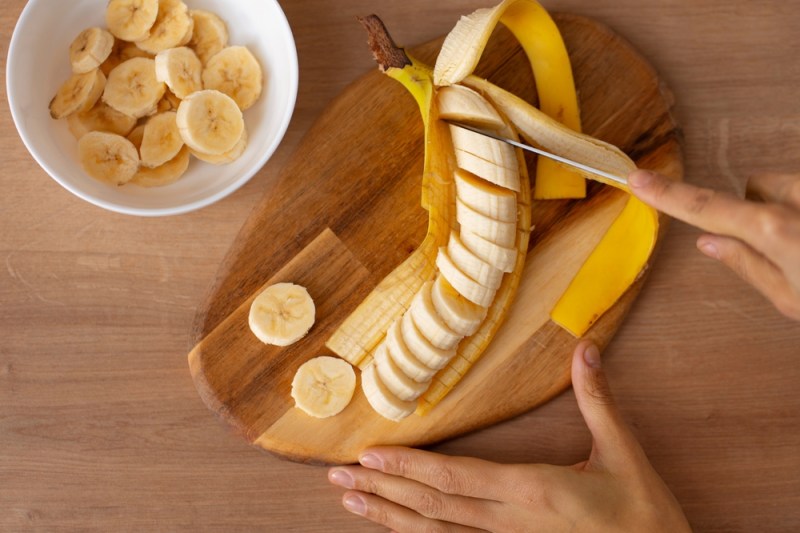Many people are a fan of the keto diet, as it can have some great benefits. As a nutritionist, I have worked with clients who are trying to stay in ketosis but aren’t sure exactly what they can eat. They don’t want to give up nutrient-dense fruits, but isn’t fruit just straight carbs?
Keep reading to learn just how many carbs you can have on the keto diet, as well as seven of the best fruits for keto dieters looking to improve their health!
What is the keto diet?

The keto diet, also known as the ketogenic diet, is a low-carb, high-fat eating plan designed to help the body stay in a state of ketosis. When your body is in ketosis, it burns stored fat for fuel instead of carbohydrates, leading to increased fat loss and stable energy levels. This metabolic state occurs when carbohydrate intake is significantly reduced, forcing the liver to produce ketones from fat.
The eating method typically encourages someone to get their calorie intake from 70–80% fat, 10–20% protein, and 5–10% carbs. No foods are technically off-limits, but these percentages can be rather restrictive.
How do you follow the keto diet?

To follow the keto diet, consider implementing the following habits:
- Reduce your carb intake to 20 to 50 grams per day, focusing on whole, low-carb foods like leafy greens, non-starchy vegetables, and berries. If you go above 50 grams, then your body will likely no longer be in ketosis.
- Increase your consumption of healthy fats from sources like avocados, nuts, seeds, and olive oil.
- Moderate your protein intake to avoid excess, which can interfere with ketosis similarly to carbs.
- Avoid high-carb foods such as bread, pasta, sugar, and starchy vegetables.
- Plan meals to include a balance of fats, protein, and low-carb vegetables based on the recommended percentages mentioned before.
- Stay hydrated and consume electrolytes.
- Monitor your progress over time and adjust your approach based on personal goals.
Can you eat fruit on the keto diet?

Yes, you can eat fruit on the keto diet, but it must be done carefully due to the natural sugars in fruit. Keto-friendly fruits are those that are low in net carbs, which is the total carbs minus any fiber.
Portion control is really important on the keto diet because you need to be extra careful that you don’t exceed the daily carb limit, which is typically 50 grams. Small amounts of low-carb fruits, such as berries or avocados, can fit into a keto diet, offering valuable nutrients and fiber. However, higher-carb fruits like bananas or mangoes should generally be avoided, as they can quickly raise carb counts and disrupt ketosis.
What are the best fruits for keto dieters?

- Avocados: Avocados contain about 2 grams of net carbs per 100 grams. They are rich in healthy monounsaturated fats, making them a perfect keto-friendly fruit for satiety and nutrient absorption.
- Raspberries: Raspberries have 5 grams of net carbs per 100 grams. They’re high in fiber and antioxidants, supporting digestive health and reducing inflammation.
- Blackberries: Blackberries provide 5 grams of net carbs per 100 grams. They are a great source of vitamins C and K, as well as manganese, all while being low in sugar.
- Strawberries: Strawberries contain 6 grams of net carbs per 100 grams. They’re nutrient-dense, offering vitamin C and antioxidants while adding a natural sweetness to keto-friendly dishes.
- Olives: Olives have less than 1 gram of net carbs per 100 grams. They are packed with healthy fats and provide a salty, savory snack option for keto dieters.
- Lemons: Lemons contain 6 grams of net carbs per 100 grams. They’re primarily used in small amounts for flavor and are rich in vitamin C, aiding immunity.
- Tomatoes: Tomatoes have 3 grams of net carbs per 100 grams. They are versatile, low-carb fruits that add flavor, nutrients, and color to many keto dishes.
What fruits should you avoid?

Fruits high in natural sugars and carbs should be avoided on the keto diet, as they can easily disrupt ketosis. Such fruits include bananas, grapes, mangoes, pineapples, and cherries. Dried fruits, such as raisins, dates, and figs, should also be avoided due to their concentrated sugar content.
It is important to note that fruit juices, even without added sugar, can quickly raise carb levels and should be limited or eliminated if you want to stay in ketosis. While these fruits are generally good for you and benefit the body, they simply aren’t compatible with the low-carb requirements of keto.
Frequently asked questions

What fruit has the lowest carbs?
Avocados are the fruit with the lowest carbs. According to MedicalNewsToday, “The net digestible carbs are only 1.8 g for each 100 g of avocado.” This is due to their high fiber content. They’re also rich in healthy fats, making them an excellent choice for low-carb or keto diets.
Can you stay in ketosis while eating fruit?
Yes, you can stay in ketosis while eating low-carb fruits in moderation. Fruits like avocados, raspberries, blackberries, and strawberries have minimal net carbs and can fit within your daily carb limits. Be sure to monitor your portion sizes to avoid exceeding 20–50 grams of carbs, which is essential for maintaining ketosis.
Can I eat a whole avocado on keto?
Yes, you can eat a whole avocado on keto. Since they contain a lot of fiber, avocados are low in net carbs, with about 2 grams per fruit, making them ideal for ketosis. They’re a very nutrient-dense food choice and a great addition to any keto-friendly meal.




